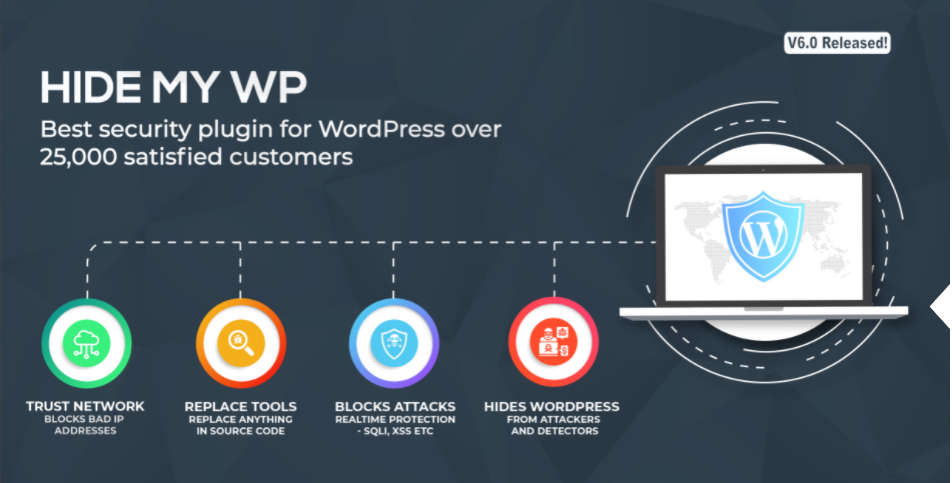I’ve been discussing injection attacks a great deal lately( Should we call this an injection attack streak?). While my previous articles spotlighted attacks like SQL injection attacks, Code Injection attacks, XPath injection attacks, and the like, this article’s target is CRLF injection attacks.
We often hear the two words WordPress and vulnerabilities together. That’s how trending the WordPress vulnerabilities is at the present times. And it’s all thanks to our dear old(or young) hackers. They are churning a lot of worry in our WordPress users’ minds. There are only two solutions to this problem: either getting rid of the hackers(Impossible!) or the vulnerabilities. You know the answer. Cut off all the known vulnerabilities of your website.
Hence, I will explore the CRLF Injection attack, the vulnerabilities of WordPress favoring this attack, and prevention methods in the rest of the article.

What Is CRLF?
CRLF refers to “Carriage Return, Line Feed.” This acronym is from the old times of typewriting. The typewriter moves to the very left of the sentence using Carriage return(CR) and to the following line vertically by using Line Feed(LF).
However, in this WordPress era, when we transmit a request to the server through the search query, the server delivers an HTTP response that contains headers and body(website content). CRLF separates HTTP header and body. It assists the server in recognizing the beginning and the end of an HTTP text.
CRLF Injection Attack
CRLF Injection attack is a type of injection attack that a hacker uses to exploit a CRLF vulnerable site by entering CRLF characters in the input option of a website. Hackers use this method to modify an HTTP parameter. The modification consists of duping the server into perceiving that a line has ended or commenced.
While the CRLF character sequences themselves aren’t harmful, attackers can use these characters for their ulterior motives.
Using the CRLF injection attack, a hacker can add fraudulent entries in the log files. If a database accepts malicious code, then a hacker that vulnerability for his benefit.
For instance, a hacker can use CRLF to fake an unauthorized login attempt alert in the log files. During this commotion, the hacker utilizes a different vulnerability to trespass the website; while the admins and regulators look into the breach activity.
A hacker can use CRLF to add a new code that lets him see the files that should be inaccessible by outsiders.
He can use CRLF to abuse further vulnerabilities like XSS vulnerability.
How To Detect CRLF Vulnerabilities:
We must always secure our WordPress from vulnerabilities like the CRLF vulnerability but, how do we know if our website has the security? What if you take preventive methods but don’t know if you have not taken care of all issues? These questions will not help our anxiety to protect our website. Hence, we can use a security scanner plugin like Scan My WP that assists in detecting vulnerabilities of any kind, including CRLF vulnerability.
Prevention Methods Of CRLF Injection Attack To Secure WordPress:
We have learned about CRLF, and now it’s time to learn preventive methods of CRLF injection attacks. After all, the whole purpose of the article is to educate users on the importance of securing our WordPress. Follow the below methods to protect your website from CRLF injection attacks:
1.Sanitize User Inputs:
It is very crucial to be aware of what users enter into the entry fields of your website. Not only that, we must always filter all the data prior to sending it to the databases. Sanitizing the user input will reduce many burdens because the attacks happen from user inputs, and sanitizing input data is the first step towards a secure website.
2.Input Validation:
Input validation is similar to input sanitization. However, input sanitization involves the removal of unwanted and harmful characters from the data. Whereas, Input validation involves restricting users from utilizing certain special characters. For example, if an entry field of a website asks for the user’s name, the user should only be allowed to enter letters. The website considers the input invalid if you use characters other than letters, like numbers or symbols.
3.Encode:
Encoding special characters of CRLF will help prevent this attack. Encoding special characters allows us to assign a specific value to the CRLF special characters for a computer to interpret.
4.Update Programming Language:
You must use updated versions of the programming language that will not permit the injection of CRLF characters in the headers of HTTP text.
5.Security Plugin
WordPress security plugin is hands down the best solution to this problem. Using security plugins like the ‘Hide My WP’ will aid in preventing hackers from attacking your website. Hide My WP has a WordPress firewall powered by Smart IDS Engine that blocks lethal attacks like CRLF injection attacks, XSS attacks, Brute force attacks, and more.
Few salient features of ‘Hide My WP’:

- It can hide WP-login, names of themes and plugins, WP-admins.
- It can change WordPress permalinks.
- It hides WordPress from theme detectors, plugin detectors, customers, and hackers/bots.
- It works with a trust network that always protects WordPress from unknown attackers.
- It blocks direct access to PHP files and directory listings.
- It can minify HTML, CSS.
- It secures your source code and also allows you to replace anything in it.
Summary
- Hackers use many vulnerabilities to exploit your website and, the CRLF injection vulnerability is one of them.
- CRLF is used to separate the header and body of HTTP text.
- A hacker can add fake entries in log files using CRLF injection. This action can cause turmoil within the regulators of your website.
- We can detect security issues like CRLF injection vulnerability using plugins like Scan My WP.
- We must use preventive ways like input sanitization, input validation, encoding CRLF special characters, and using WordPress security plugins.
- Last but not least, there will always be openings for a hacker to use. Hence, we must be vigilant and keep ridding of all types of security mistakes before a hacker can make a move.
